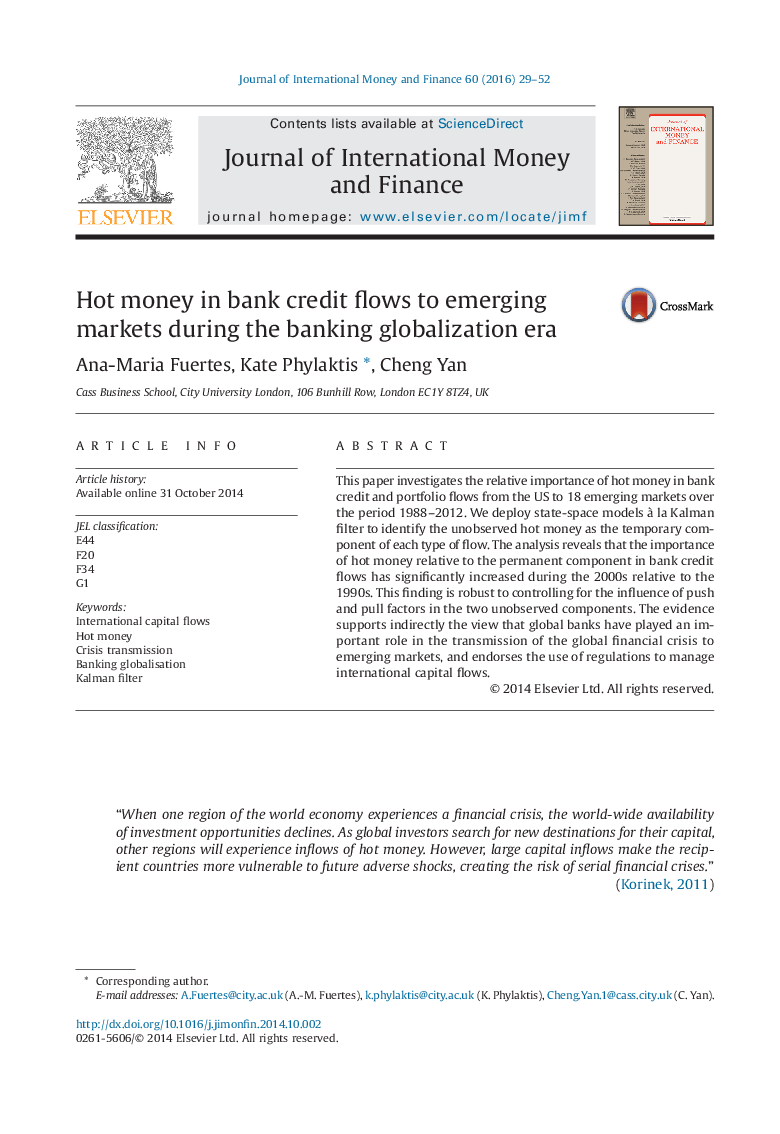| Article ID | Journal | Published Year | Pages | File Type |
|---|---|---|---|---|
| 963747 | Journal of International Money and Finance | 2016 | 24 Pages |
•Analysis of portfolio and bank credit flows from the US to 18 emerging markets, over the period 1988–2012.•Use of state-space models à la Kalman filter to identify the unobserved hot money as the temporary component.•The importance of hot in bank credit has increased greatly during the 2000s relative to the 1990s.•This finding is robust to controlling for push and pull factors in the two unobserved components.•Global banks have played a role in the transmission of the global financial crisis to emerging markets.•It endorses the use of regulations to manage international capital flows.
This paper investigates the relative importance of hot money in bank credit and portfolio flows from the US to 18 emerging markets over the period 1988–2012. We deploy state-space models à la Kalman filter to identify the unobserved hot money as the temporary component of each type of flow. The analysis reveals that the importance of hot money relative to the permanent component in bank credit flows has significantly increased during the 2000s relative to the 1990s. This finding is robust to controlling for the influence of push and pull factors in the two unobserved components. The evidence supports indirectly the view that global banks have played an important role in the transmission of the global financial crisis to emerging markets, and endorses the use of regulations to manage international capital flows.
